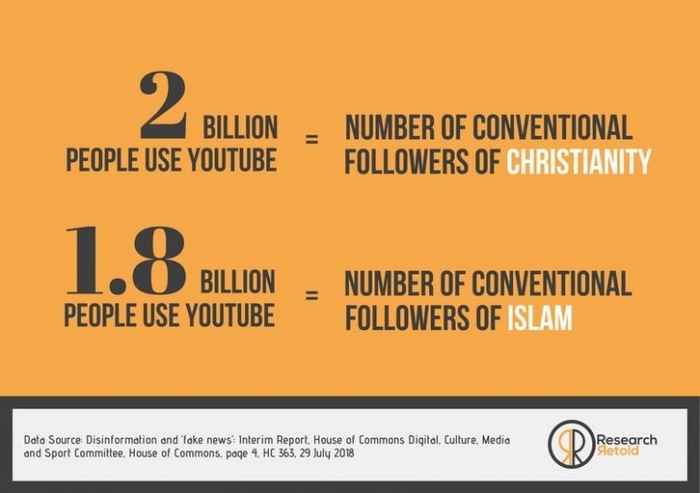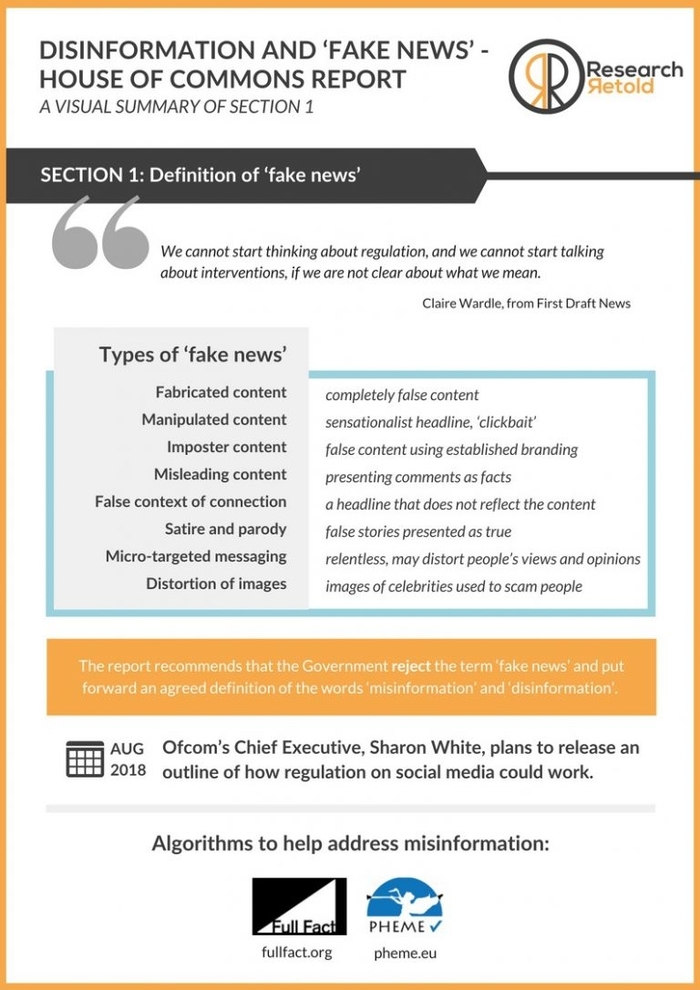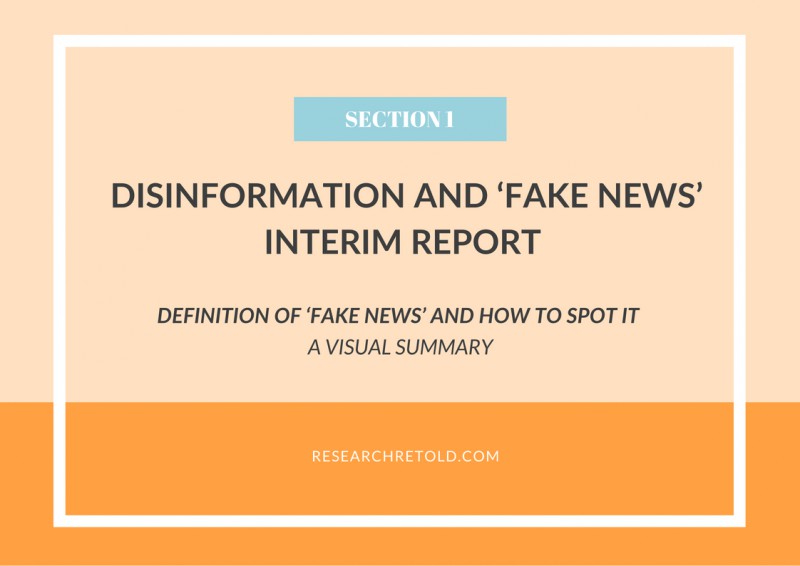In this blog post, we look at the definition of fake news and highlight the key findings in a visual summary.
This is based on Section 1 of the Disinformation and ‘fake news’ report and is the first in a series of seven posts.
Let´s begin!
About the report
In July 2018, the House of Commons Digital, Culture, Media and Sport Committee published an Interim Report titled Disinformation and ‘fake news’.
The scope of this report:
To study ‘the spread of false, misleading, and persuasive content, and the ways in which malign players, whether automated or human, or both together, distort what is true in order to create influence, to intimidate, to make money, or to influence political elections.’
A specific focus of the report is to address concerns related to the “political use of social media”. The pressing issue of social media in relation to politics was evidenced by Tristan Harris, from the Center for Humane Technology who offered these statistics:

The report includes seven sections:
1. Definition of fake news and how to spot it
2. Role of tech companies – definition, legal liabilities
3. The issue of data targeting, based on the Facebook, GSR and Cambridge Analytica allegations
4. Political campaigning
5. Russian influence in political campaigns
6. Co-ordination of Departments within Government
7. Digital literacy
The evidence supporting this report was gathered from:
- 20 oral evidence sessions, including two informal background sessions
- 61 witnesses
- <3,500 questions
- 2 summoned witnesses: Alexander Nix and Dominic Cummings
- <150 written submissions
- correspondence with organisations, individuals and experts in the tech field, journalists and politicians
- 1 oral evidence session in Washington D.C.
Definition of fake news
The report kicks off by tackling the definition of fake news head-on. It does so by using categories of content that people are used to seeing online. They break down each category and explain what that might look like. This information is useful for anyone on the Internet, as we are daily exposed to information on social media. It is often difficult to spot fake news online, and every one of us has the responsibility to educate ourselves and develop a critical mind.
The report then discusses the introduction of terms such as ‘disinformation’ or ‘misinformation’ to describe this online phenomenon. After the definition of fake news, the section outlines various organisations and algorithms that tackle this issue. We captured the essence of these findings below.
A visual summary of Section 1

Next week we will tackle Section 2 of the ‘Disinformation and ‘fake news’ report.
